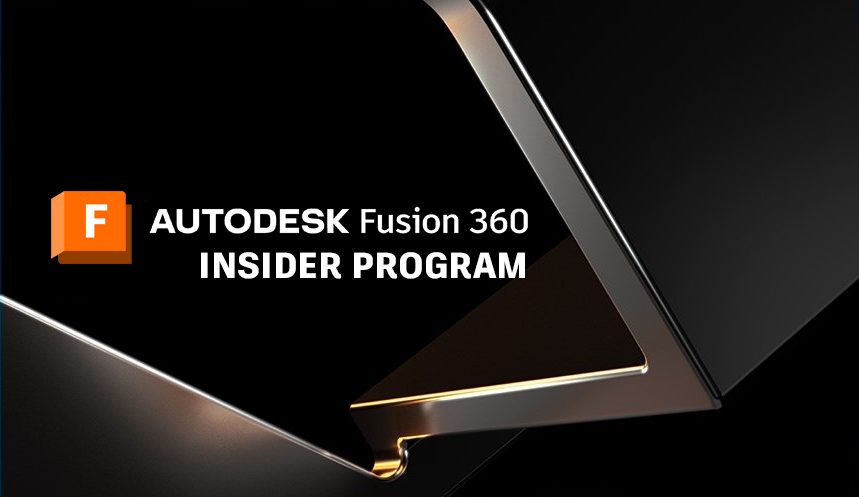This post is also available in: Français (French) Italiano (Italian) Deutsch (German) 日本語 (Japanese)
If you just got a new Apple M1 or M2 computer, you probably want your apps to take advantage of everything your machine has to offer. We have great news: you’ll soon be able to run Fusion 360 natively on Apple silicon machines. Read on for more info and responses to frequently asked questions.

With our latest July 2023 product update right around the corner, we’re excited to announce that you’ll soon be able to run Fusion 360 natively on Apple silicon computers.
We’ve compiled a list of questions we anticipate you’ll have below.
How can I run Fusion 360 natively on an Apple silicon computer with an M-series chip?
All you have to do is to restart Fusion 360 to update to the latest version. If you’re running Fusion 360 on a M1 or M2 chip, Fusion 360 will automatically run the native ARM64 version of the application. You can confirm which version of Fusion 360 is running by checking Help > About. The architecture will be listed after the application version.
Why am I getting a “Rosetta is not installed” dialog when trying to install Fusion 360 on Apple Silicon?
The main Fusion 360 application and its default add-ins now all run natively on Apple silicon. However, some individual processes and back-end services still temporarily require Rosetta 2 to be installed for Fusion 360 to run. This should not impact the performance of how Fusion 360 runs on your machine.
Will I see any performance benefits?
Absolutely. Through our internal testing, we’ve seen noticeable improvements in two key areas: compute performance and battery life/usage. Modeling and assembly modeling tasks are generally 30% faster on Apple silicon compared to Intel/Rosetta 2. Local Rendering also saw a noticeable boost in speed, enabling you to achieve a finished render faster than ever before.
The other major benefit here is battery life: Fusion 360 now consumes almost 50% less power. To test this, we ran 5,300 test cases 100 times over on an Apple silicon Mac at 100% battery. By the end of the tests, Fusion 360 x86_64 running via Rosetta 2 translation consumed 77% of the battery life, leaving the computer at only 23% battery life left at the completion of our tests. With native ARM64 code, Fusion 360 only consumed 40% of its battery life, resulting in 60% of the battery still left for use.
Can I still run Fusion 360 on an Intel-based Apple computer?
Yes, this will not impact those of you using Fusion 360 on Intel-based machines. Fusion 360 will continue to be supported on Intel-based Apple computers.
Should I upgrade my Intel machine to an Apple silicon machine?
There are many factors to consider when making the decision to upgrade your computer, and it ultimately comes down to your personal needs and requirements. Apple currently supports Intel-based Macs, and so does Fusion 360. We update Fusion 360 frequently to ensure that it’s always running smoothly and securely, and is leveraging the latest available technologies. Our recommendation is to make sure that you’re using the latest official version of Fusion 360 on a machine that receives the latest macOS updates.
Will my installed Fusion 360 add-ins be compatible with Apple silicon?
Initially, no. You’ll need to enable the “Open using Rosetta” checkbox within the Fusion 360 application info until the add-in author can provide you with a Universal Binary that works on both x86 and ARM Fusion 360 clients. Instructions on how to do this can be found here. If experience issues with add-ins downloaded from the Autodesk App Store, please contact the authors of your add-ins and ask them to update the add-in.
Where can I report issues with running Fusion 360 on an Apple silicon machine?
If you experience issues with this new experience, please post about it on our support forum so others can participate in the discussion.
Can I try Fusion 360 on Apple silicon before it’s publicly available?

Yes! Fusion 360 Insiders currently have early access to Fusion 360 on Apple silicon, and they’ve already been putting it to the test. If you’re interested in early access, learn more about the program and become a Fusion 360 Insider here.
Here’s what our insiders have to say about running Fusion 360 on Apple silicon machines via our exclusive Insider Build:
“It’s so much faster and more reliable. It feels a lot quicker than the benchmarks you shared. Well done!”
“This runs buttery smooth. I’m able to turn off Limit effects during navigation to maintain framerate inside the preferences for Graphics, and it’s a dream. Hats off to the team!”
As always, we welcome more questions and are happy to answer them for you. Feel free to ask them in the comment section below, and we’ll get back to you as soon as possible.
Ready to take your product product development process to the next level?
